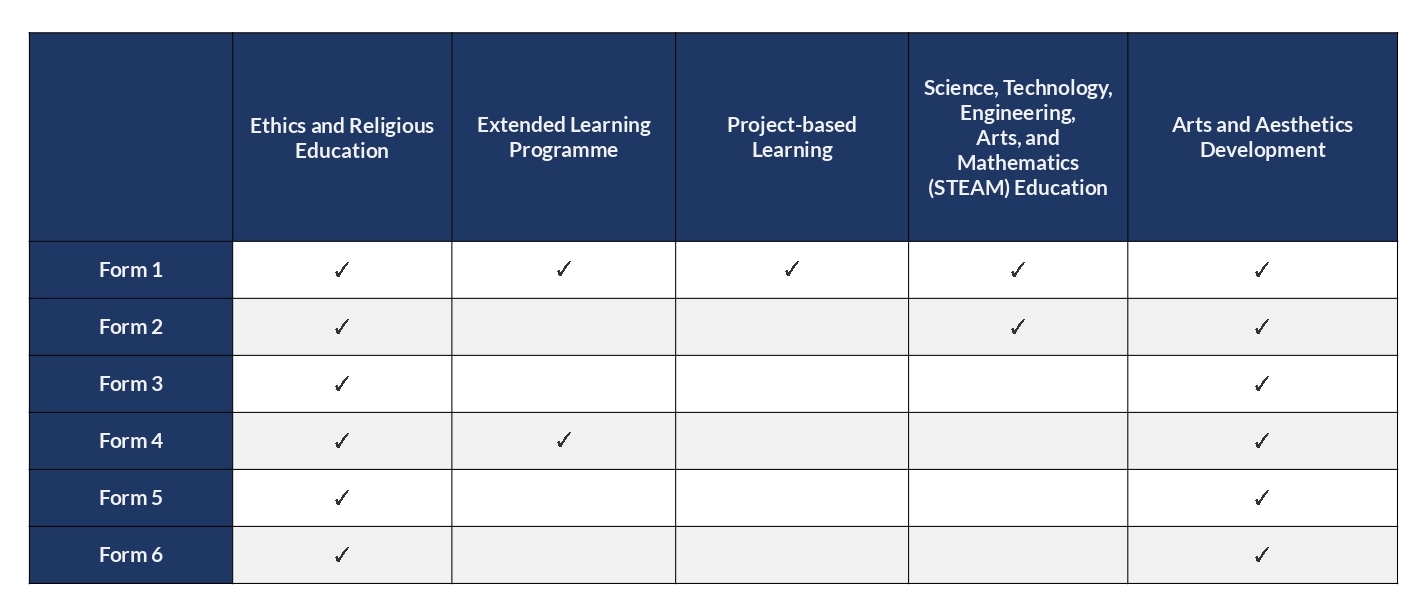Rationale of the Curriculum Design
The design of the school-based curriculum is guided by a clear rationale that takes into account various factors. These include aligning with the vision and mission of MCS, incorporating the virtues and values of the Maryknoll spirit, and considering the profile of an MCS graduate. The design also adheres to the goals, aims, and objectives of the Hong Kong Schools Curriculum as stipulated by the EDB, addresses students’ needs and feedback, and considers the school context, students’ interests, and real-world experiences. Furthermore, it remains responsive to the ever-changing needs and challenges of the contemporary world.
Context
The curriculum recognises the global trend in education, which emphasises equipping students for rapid economic, scientific, and technological developments. It also acknowledges the societal changes and challenges faced worldwide.
The six-year student-centred curriculum aims to provide holistic learning experiences that prepare students for the demands of the 21st century. It promotes a seamless transition between the junior and senior secondary levels. Additionally, it focuses on enhancing the vertical continuity and lateral coherence of the school curriculum, specifically supporting Form 1 students as they transition from primary to secondary education, and Form 4 students as they navigate the shift from junior to senior secondary education. Students would benefit from additional guidance and support to refine learning skills and cultivate a positive learning attitude, readying themselves to tackle real-life challenges and adapt to changing needs in the modern world.
Pedagogies and Strategies
The curriculum design employs various effective pedagogies and strategies. Teachers serve as facilitators, supporting and guiding students in their journey of inquiry-based learning. It fosters students’ capacity and motivation to become active learners, critical thinkers, and problem-solvers. Problem-based learning is integrated, engaging students in collaborative activities that challenge them to find solutions to real-life problems. This approach equips students with valuable technological knowledge and skills, such as design thinking, computational thinking, and creativity. The curriculum also adopts a spiral approach, encouraging the application of knowledge across different subjects in designing and conducting research studies. Collaborative learning is promoted, allowing students to work in groups and develop teamwork, effective communication, and collaboration skills. Additionally, the curriculum leverages information technology in education, utilising e-learning platforms and apps to cater for diverse learning needs and promote technology-driven learning experiences.

